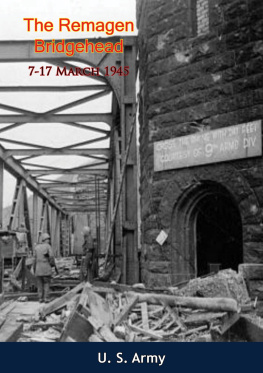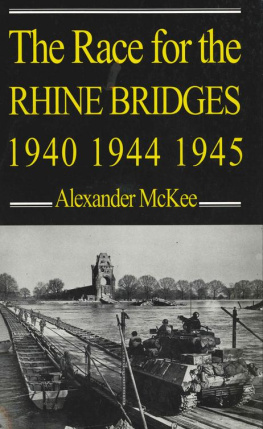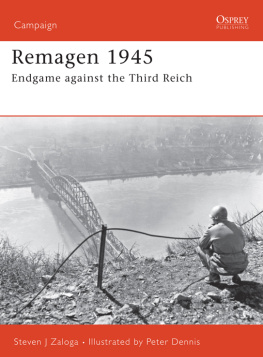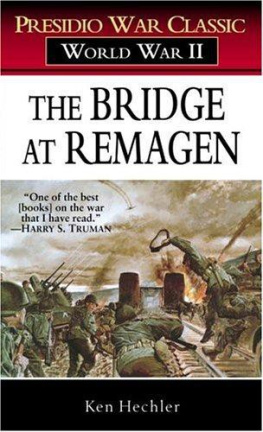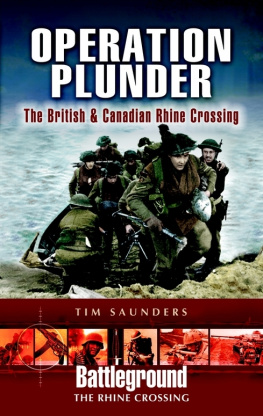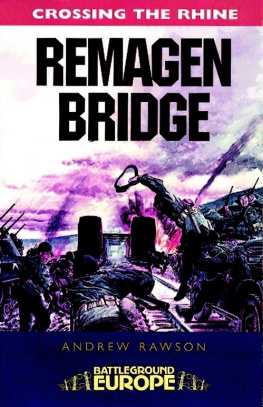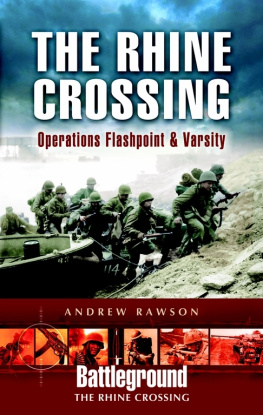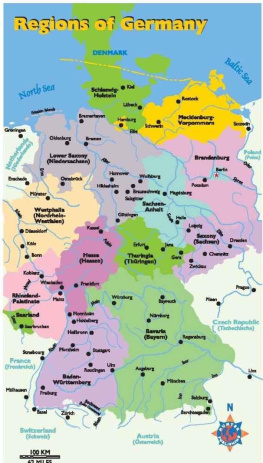
This edition is published by PICKLE PARTNERS PUBLISHINGwww.picklepartnerspublishing.com
To join our mailing list for new titles or for issues with our books picklepublishing@gmail.com
Or on Facebook
Text originally published in 1987 under the same title.
Pickle Partners Publishing 2015, all rights reserved. No part of this publication may be reproduced, stored in a retrieval system or transmitted by any means, electrical, mechanical or otherwise without the written permission of the copyright holder.
Publishers Note
Although in most cases we have retained the Authors original spelling and grammar to authentically reproduce the work of the Author and the original intent of such material, some additional notes and clarifications have been added for the modern readers benefit.
We have also made every effort to include all maps and illustrations of the original edition the limitations of formatting do not allow of including larger maps, we will upload as many of these maps as possible.
FIRE SUPPORT EMPLOYMENT IN THE RHINE RIVER CROSSING AT REMAGEN, GERMANY:
An evaluation of field artillery doctrine, standing operating procedures, and the actual procedures employed by the III Corps Artillery during the crossing of the Rhine River at Remagen, Germany 6-20 March 1945
by
Major Jeffrey L. Shafer, USA
TABLE OF CONTENTS
Contents
TABLE OF CONTENTS
ABSTRACT
This study is an historical analysis of the procedures and doctrine used by the III Corps Artillery during the First U.S. Armys crossing of the Rhine River at Remagen, Germany. This study examines the actions of III Corps Artillery in the employment, organization for combat, and command and control of artillery units at Remagen. The fire support procedures employed by the field artillery are compared with those prescribed by published doctrine and unit standing operating procedures. This comparison is used to evaluate the adequacy of doctrine and the need for standing operating procedures to supplement the published doctrine. The development of standing operating procedures from lessons learned during earlier combat is examined to show how the doctrine allowed flexibility and standardization that was evident throughout the army. This standardization continues to serve as a model for fire support operations in todays emerging combined arms doctrine.
The study concludes with lessons learned: (1) Centralized command and control of field artillery should be under the headquarters that is best organized to control a large number or units, (2) doctrine and standing operating procedures are useless unless leaders develop and execute plans that are in accordance with the principles established and practiced, (3) the tendency to establish standing operating procedures that violate or contradict doctrine should be avoided, (4) a need for more liaison officers was evident at Remagen as well as through the war and continues to exist today even with improved technology, (5) the redundancy of tasks outlined in doctrine provides the flexibility needed to accomplish the fire support mission during a fast moving battle, and (6) field artillery units should practice several tactical missions and not just the standard mission associated with peace time organizations.
This study concludes that the standardization evident throughout III Corps Artillery was accomplished by prudent use of published doctrine and standing operating procedures. While these procedures were ignored in some instances at Remagen the flexibility necessary for the employment of the field artillery during the battle was provided by this doctrine.
ACKNOWLEDGEMENTS
First and foremost I must thank my wife, Janis, and our son, Jared. It is only through their understanding and unselfish gift of time that I was able to complete this study.
My committee chairman, MAJ Gary Griffin was instrumental in keeping me on target and provided the skill and technique to help guide me through the mounds of after action reports. MAJ Griffin provided critical comments and excellent recommendations that expanded the detailed research facts into a meaningful document. LTC John Hixon provided the expertise of his vast knowledge of how the field artillery was employed during World War II. COL Philip Dyer accepted the task of serving as a consulting faculty member and rounded out a committee of professional artillerymen. His comments were instrumental in helping to define the thesis and narrow the topic for research. The staff of the Combined Arms Research Library was most helpful during the research phase of the thesis; I commend them for their professional and helpful attitude. Also, the staff of the Morris Swett Library, Fort Sill, Oklahoma, kindly assisted in finding those key documents that enabled the study to be completed. Without their help, this project would not have been finalized.
Finally, I dedicate this study to my father-in-law, Mr. Robert L. Meek, a proud citizen soldier who served with the 281st Field Artillery Battalion at Remagen in 1945.
CHAPTER ONE
The purpose of this paper is to analyze the fire support procedures and doctrine employed by U.S. Army Field Artillery during World War II and compare those procedures and doctrine with the III Corps Artillery campaign in the river crossing operation over the Rhine River at Remagen, Germany. Specifically, the research will look at the field artillerys role during crossing operations in general and how fire support planning, coordination, and control were executed in this particular case.
As a natural obstacle to maneuver, river crossings have represented a timeless challenge to commanders. As such, they continue, regardless of technological advances in battlefield maneuver, to have a considerable impact on military operations. By providing a natural line of defense they impose severe restrictions to the surface movement of forces. Therefore, by definition, the attack of a river line requires multi-level specialized preparation, both technical and tactical, directly proportionate to the strength of the forces involved. {1} The crossing of the Rhine River at Remagen proved no exception. The skills displayed by commanders at Remagen serve as an excellent example of the qualities described in the tenets of todays AirLand Battle doctrine. These tenets dictate how we will train, fight outnumbered and win. They emphasize offensive spirit and are characterized by initiative, depth of time, distance and resources, agility of mind and organization and synchronization of combat power.
This thesis, therefore, will focus on the field artillery tactics employed by the III Corps Artillery at the Ludendorff railroad bridge in the context of the above tenets. Compliance with official field artillery doctrine, as published in field manuals and training circulars, and unit standing operating procedures (SOP) will be studied to determine how they enabled units to provide effective fire support in rapidly developing situations with little or no direct orders. In this regard several key questions will be answered. For example, what techniques were used to mass the fires of the numerous field artillery battalions assembled to support the expanding Rhine River bridgehead? Had a plan for the massing of this fire support been prepared in anticipation of the crossing? Were lessons learned from earlier operations applied in the preparation of standing operating procedures for crossing the Rhine River? And most important, can the actions of the field artillery at Remagen serve as a model for the fire support operations in todays rapidly emerging combined arms doctrine. This introductory chapter will discuss the methodology used in the research, the assumptions upon which the research was based, organization of the study, definition of key terms and phrases, and finally, the significance of the study itself.




